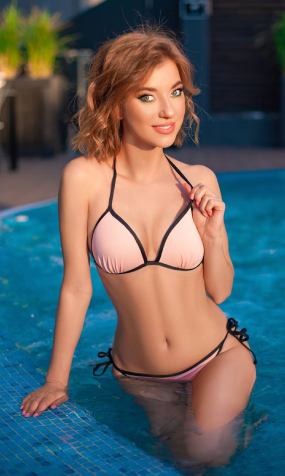Far from mere social protocol, the affirmation of a relationship status is a powerful gesture, one that can bolster the sense of unity between partners and even intensify feelings of ardor and possessiveness. It’s a phenomenon that reflects how deeply intertwined our love lives have become with technology, reshaping the way we perceive romantic bonds and the expectations that come tethered to them.
The Essence of Relationship Status in Partnerships

At the heart of every romantic entanglement lies a tapestry of agreements that define the connection between partners, a blend of spoken promises and unspoken understandings that shape the landscape of intimacy. These pacts, whether carved in the clarity of explicit conversation or woven in the subtlety of implicit expectations, form the bedrock upon which the edifice of a relationship is built.
Explicit agreements are akin to the bold strokes of a painter’s brush, clearly delineating the boundaries and responsibilities that each partner agrees to uphold. They might manifest as joint decisions on financial management, expressions of affection, or even the division of mundane chores—each a conscious contract that fortifies trust.
Conversely, implicit understandings are the delicate shadows in a relationship’s portrait, born of gestures and intimations that partners naturally attune to over time. These silent accords emerge from the rhythms of daily life, from knowing glances to the unspoken decision to avoid certain taboo subjects, recognizing them as the terrain of personal sanctity.
Research underlines the importance of these agreements, highlighting that couples who navigate these waters deftly, striking a balance between explicit declarations and implicit harmony, often find greater contentment. Such balance is not static but dynamic, evolving as relationships deepen or face the crucible of change. It’s this intricate dance of agreement and understanding that we must grasp to truly comprehend the essence of relationship status.
Types of Relationship Statuses and Their Meanings
Cohabitation, a status that interlaces lives without the seal of matrimony, has held steady ground, reflecting a shift towards non-traditional unions. Meanwhile, the rise in singles hints at a burgeoning independence, as individuals embrace self-discovery over societal expectations.
- Single: An individual not currently in a committed relationship, often embracing autonomy and personal growth.
- In a relationship: Partners committed to each other but not legally bound; a stage that signifies deepening emotional connections.
- Engaged: Couples who have pledged to marry, symbolizing a promise of future matrimony and shared life plans.
- Married: A legal union, a public vo that supposes a vow of loyalty and the connection of lives and goals.
- Cohabiting: Partners live together without marriage vows
- Separated: Couples in the process of a physical or emotional pause, often a prelude to a more permanent division.
- Divorced: Individuals who have legally dissolved their marriage, signifying the conclusion of a marital relationship.
- Widowed: Those who have lost a spouse to death, marking a transition to single status under somber circumstances.
Navigating Expectations and Goals in Relationship Dynamics

Reflecting on personal relationship goals becomes instrumental in this alignment. It’s about discerning not just the ‘what’ but the ‘why’ behind our yearnings for companionship, security, or passion. This introspection is the compass that guides us toward a partner whose aspirations and values echo our own. It’s not merely about seeking common ground, but about nurturing it, watering it with open dialogue and mutual respect.
Whether we yearn for the adventure of a nomadic love, the stability of a lifelong union, or the freedom of casual connections, recognizing and expressing our expectations is the bedrock of relational contentment. In the following sections, we will explore how these personal aspirations interact with society’s legal frameworks, further revealing the multifaceted nature of relationship statuses.
Legal Perspectives: Relationship Status Discrimination
As we navigate the multifaceted world of relationships, the legal landscape offers a bastion against the pervasive tide of relationship status discrimination. Under the protective umbrella of the Anti-Discrimination Act 1991, it is unlawful to treat individuals unfavorably based on whether they are single, married, united in a civil partnership, separated, divorced, or widowed. This legislative shield serves to deter both blatant biases, such as a couple being denied lodging due to their unwed status, and more insidious forms, like policies that inadvertently disadvantage the recently separated.
Moreover, the ripple effects of relationship status discrimination are not limited to direct targets; it is equally unjust to discriminate by association, as when a landlord turns away a tenant because their roommate is navigating the aftermath of a breakup. Such protections underscore society’s growing recognition that personal relationship choices should not be grounds for unequal treatment.
As we delve further into the nuances of relationship statuses, it is essential to remember that these legal safeguards are in place not only to prevent discrimination but to foster an environment where individuals feel secure in their personal affiliations, irrespective of the form they take. In the forthcoming sections, we will explore how these legal nuances interplay with the social and emotional dimensions of relationship statuses.
Comprehensive Guide to Relationship Status Terms

In the tapestry of human connections, the terminology we use to define our relationship status is as varied as the emotions that spark them. As we prepare to unfurl a compendium of terms, it’s essential to understand that each label is a key that unlocks a different chamber of the heart, offering insight into the complexities of romantic bonds.
From the blissful simplicity of ‘single’ to the profound pledge of ‘engaged,’ each term encapsulates a unique narrative. ‘In a relationship’ suggests a story of two hearts in mutual agreement, while ‘married’ weaves a legal thread into the romantic fabric. ‘Cohabiting’ speaks to a modern arrangement, where commitment is present without the trappings of traditional matrimony, and ‘separated’ denotes a junction of contemplation and potential transformation within a partnership.
Further along the spectrum, ‘divorced’ marks a conclusion and a new beginning, often laden with lessons learned and resilience gained. ‘Widowed’ stands as a solemn testament to love lost and the strength required to forge ahead. Each status, be it celebrated or challenging, contributes to the rich mosaic of human experience.
As we edge closer to revealing a comprehensive glossary, remember that these terms are more than mere words—they are reflections of life’s ebb and flow, of choices made and paths taken. They serve not to confine but to illuminate the myriad ways in which we relate, love, and coexist. So, let us turn the page with an open mind, ready to explore the profundity of each term in the lexicon of love.
| Relationship Status | Definition | Connotations | Legal Recognition |
|---|---|---|---|
| Single | An individual not currently in a romantic partnership. | Autonomy, self-discovery | N/A |
| In a Relationship | Partners committed to each other outside of legal or marital frameworks. | Emotional connection, partnership | N/A |
| Engaged | A committed couple who have formally agreed to marry. | Promise, future commitment | Some legal recognition, varies by region |
| Married | Partners united legally, often with a ceremonial commitment. | Unity, legal and financial intertwining | Full legal recognition |
| Cohabiting | Partners living together in a domestic setting without marriage. | Non-traditional commitment, shared living space | Varies, may be recognized under common-law in some regions |
| Separated | Legally married individuals who are in the process of ceasing to cohabit. | Transition, potential for reconciliation or divorce | Legal recognition as a distinct state from marriage or divorce |
| Divorced | Individuals who have legally ended their marriage. | Conclusion of marriage, new beginnings | Full legal recognition |
| Widowed | An individual whose spouse has died. | Loss, transition to single status | Legal implications for inheritance and benefits |
FAQ
-
When one is dating casually, there is hardly commitment to a partner. It's like having fun with a person and testing the boundaries. When someone is in a relationship, this implies a ceratin degree of commitment and responsibility that comes with it.
-
Relationship statuses shape more than personal identity; they hold sway over legal rights and societal privileges. Marriage may grant tax benefits or next-of-kin status, while being single might affect social perceptions and opportunities, highlighting society's intricate weave of law and tradition.
-
Each status carries its own psychological nuances, challenging individuals to find fulfillment while navigating the expectations placed upon them. So, yes, one's relatioship status influences both emotional and mental well-being of a person.
-
Open communication about relationship status is the cornerstone of transparency in love, fostering understanding and trust in romantic bonds. It's a dialogue that nurtures connection and clarity, essential for the health of any partnership.










